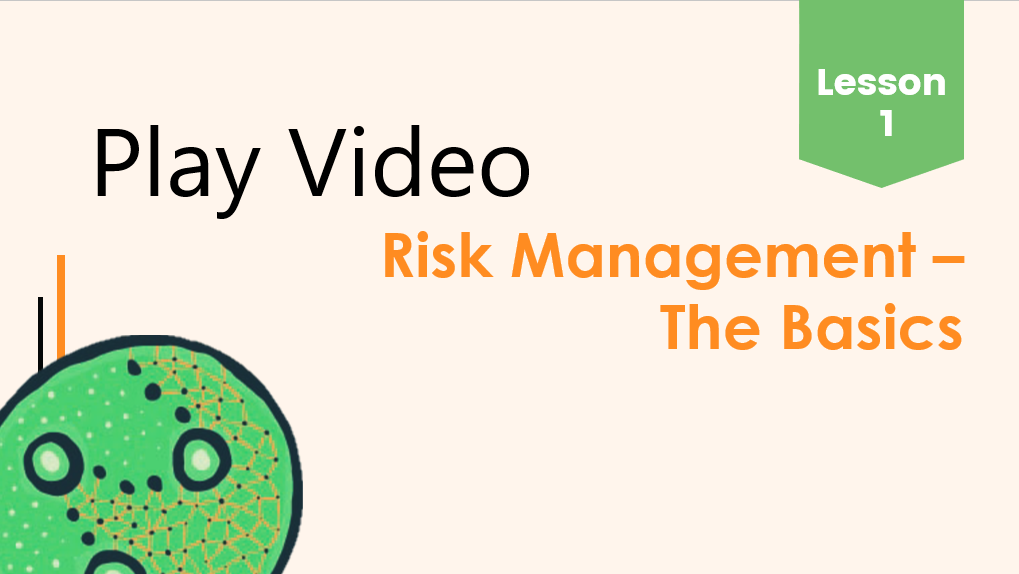OTS Management has produced an online training/workshop for the use of Indigenous organisations in their Risk Management Planning.
The video embedded into this article is an excerpt from the lesson introducing the process of Risk Management Planning and has been edited to under 10 minutes from the original 20-minute lesson.
We use it in this article to help introduce the 6 steps in Risk Management Planning, that you can implement yourself.
Risk Management Planning is all about "being prepared" so that when the worst-case scenario happens you have contingency plans. In the best-case, Risk Management Planning allows you to have managed the risk so that the impact when it happens has been reduced.
The Risk Management Planning process is a step by step logical process that you can follow and do yourself.
The process first gets you to identify all the risks that face the organisation, and then analyse and evaluate those risks so that you can manage them.
There are 6 steps:
- Identify the risks
- Assess all the risks you have identified
- Map the analysed risks into a one-page Risk Matrix
- Create strategies to manage the risks
- Manage the Risk Management Plan itself
- Monitor, test and evaluate
This video explains the process.
To summarise, in step 1 you identify all the risks that face your organisation. Include all the risks you can think of.
Don't edit them at this stage - you will have time to assess them for importance later.
The best way to do this is to go through how you "do your business" as that may remind you of hidden risks. Remember, there are no stupid suggestions when you do this.
It may be best to group the risks you identify under the following categories:
- Strategic risks
- Compliance risks
- Operational risks
- Financial risks
- Reputational risks
Step 2 is to assess each of the risks you have identified as to their likelihood and the consequence of their occurring.
The assessment of likelihood is simply an assessment of how likely that risk-event could take place - whether it is Rare, Unlikley, Possible, Likely, or Certain.
The assessment of Consequence is about the impact if the risk-event happens - could it be Negligible, Marginal, Critical or Catastrophic?
Once you have analysed and assessed all your identified risks, step 3 is to map them into a Risk Matrix.
Here is an example of a Risk Matrix:

The Risk Matrix
On the left is the ranking of Likelihood, from Rare to Certain.
At the bottom is the ranking of Consequence, from Negligible to Marginal to Critical to Catastrophic.
Depending on the assessment of each risk, each risk is mapped into the Risk Matrix into a square that is the intersection of the Likelihood rank and the Consequence rank ( as shown in the video).
The Risk Matrix helps you to quickly identify which risks are critical risks, high risks, moderate risks and low risks.
In this way, you can prioritise your valuable time and plan the order in which you will deal with the risks.
Step 4 is to take each risk, and depending on the level of risk, create strategies to deal with those risks.
You can either create strategies to reduce the likelihood of that risk occurring, or you can create strategies to reduce the consequence of that risk when it does occur.
Step 5 is to manage the plan itself.
You need to document the plan, including action plans for its implementation. You need to communicate the plan and train employees to be able to react under the plan. You need to schedule activity and delegate "owners" of the plan who can monitor it and review it as necessary.
Step 6 is to monitor, test and review the plan. You should prepare schedules of when the risks will be reviewed, and strategies evaluated as to effectiveness, as well as when the plan will need revision.
If you want to learn more about Risk Management Planning for Indigenous Organisations, learn more by clicking on this link.
In the meantime, you can make sure you are kept informed of tools and resources to help your organisation become more effective and productive by subscribing to our blog posts to have them sent directly to you. You can do this by signing up here.



